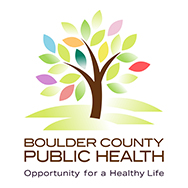Remediation of Mold After a Flood
Failure to remove contaminated materials and reduce moisture and humidity after a flood can present serious long-term health risks. Standing water and wet materials are breeding grounds for microorganisms, such as viruses, bacteria, and mold. These can cause disease, trigger allergic reactions, and continue to damage materials long after the flood.
Property Manager & Landlord Requirements
Landlords are required to fulfill specific legal requirements (Warranty of Habitability, CRS 38-12-503) that make a rental property fit for human habitation. Flooded buildings must be thoroughly dried, and evaluations must be conducted during and after remediation. Property managers should conduct a visual inspection and document remediation efforts to ensure properties have been properly remediated to prevent mold health problems.
Documentation of Mold Remediation Efforts
Environmental Sampling
Environmental sampling for mold can help to determine the extent of the problem, the location of mold, and the quality of the remediation. However, sampling for mold cannot be used to determine if a building is “safe” because there are no quantitative, health-based guidelines that describe “safe” levels for microbial exposure to mold. Instead, property owners and managers should conduct a visual inspection and document remediation efforts to ensure appropriate steps have been taken to prevent mold health problems.
Indoor Air Contamination (Mold, Bacteria & Viruses)
Review these resources for guidance on what to look for and steps to take to ensure your home is safe:


